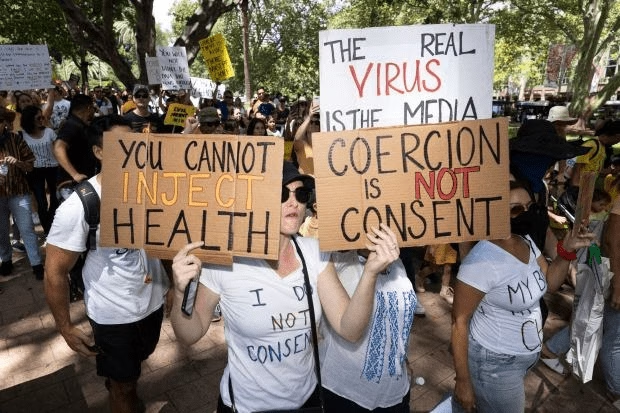Vaccine Hesitancy Isn’t Just about Misinformation
“If I have to choose the vaccine or chip I’m gonna choose death.”
British rapper M.I.A., singer of the 2009 hit “Paper Planes,” shocked fans with this statement, which sounded more like a derisive parody of anti-vaxxers than a bona fide expression of skepticism. Except… she wasn’t joking. How many others feel the same way?
Thankfully, the numbers are on a downward trend. Indeed, the Kaiser Family Foundation quantifies that the share of people who have already gotten a vaccine or want one without hesitation has increased from 34% in December to 62% today.
Worryingly, however, many “hard no’s” remain. Polling consistently indicates that around one in four Americans still refuses to be inoculated. This is especially concerning because variants have prompted researchers to estimate that herd immunity will require at least 80% of the population to be vaccinated, which will be impossible if this level of vaccine refusal persists. The stakes are high: without herd immunity, COVID could become a recurring fact of life that seasonally hospitalizes and kills, much like the flu.
It’s also important to note that these “hard no’s” are not a homogenous group. Though often in vastly different proportions, they come from many different parts of society:

What is the root cause of vaccine hesitancy?
The popular narrative, at least among the mainstream media, faults irresponsible sources of information. Lies and propaganda from the Trump White House, Fox News, and other such media outlets questioning the severity of the virus—and the effectiveness of the cure. There is much truth to this. While America has suffered from the COVID pandemic, we’ve also suffered from an epidemic of misinformation. Indeed, data suggests that around 30% of conservatives say they are “hard no’s,” in contrast to just 5-10% of liberals.
But although these factors have surely played a big role in vaccine hesitancy, there are also other issues at play.
What else is going on here?
First things first, vaccine hesitancy, stems, at least in part, from the mixed messaging from our elected officials, the CDC, and even the scientific community. Vaccines are a huge boon that will enable us to go back to normal, to send our children to school, and to socialize with our friends without practicing social distancing or wearing masks. Yet, some of the rhetoric that we hear dramatically overestimates the risks of returning to normal for those who have been vaccinated. This messaging blunder has taken a toll and convinced some people not to prioritize getting a vaccine.
Second, misinformation, while predominantly a problem for the Right, has also affected communities largely on the Left, particularly the Hispanic and African-American communities. Furthermore, the anti-vax movement, which obviously preceded COVID-19, was a phenomenon across the political spectrum and one entertained by many prominent individuals in Hollywood and other liberal spaces.
Third, many conservatives and evangelicals are hesitant to get the vaccine not because of their politics or misinformation but because of certain fundamental values that predispose them to apprehension. A landmark study published in the top journal Nature found those who care more about the purity of their bodies and minds, and who value individual liberty over governmental authority, are twice as likely to be vaccine-hesitant. These beliefs, in turn, are often deeply embedded in conservative and religious worldviews (see also). As Yale’s Dr. Saad Omer (who authored the study) explains, the striking implication is that education is unlikely to solve this issue because it’s rooted not in ignorance, but in our underlying values.
Fourth, for minority communities, vaccine hesitancy may be partially rooted in a history of medical racism. In the infamous Tuskegee Syphilis Study, four hundred African-Americans were lied to and denied treatment for their STD so scientists could observe its natural progression. This shameful incident, as well as persistent racial disparities, have catalyzed mistrust. Latinos have also been victimized by medical racism, including thousands of forced sterilizations. Thankfully, however, racial gaps in vaccination rates have narrowed dramatically in recent months—a profoundly positive sign (furthermore, access may have been a greater issue than skepticism in the first place).
So how should we go about addressing this hesitancy?
A few strategies seem promising.
First, use the right message. As of three weeks ago, a remarkable 99.992% of fully vaccinated Americans remained COVID-free. Rather than focusing on vague concepts like “herd immunity,” or constantly lowering expectations for what people can do once they’ve been vaccinated “out of an abundance of caution,” we should talk about how vaccines essentially free people from the risk of COVID.
Second, use the right messenger. Family, friends, neighbors, and community leaders can help normalize the act of being vaccinated and exert a stronger influence than distant experts. For instance, a case study out of Israel demonstrated that a particularly influential Imam was key to reducing hesitancy in his Bedouin community.
Finally, policymakers should lower logistical barriers to getting vaccines.
Fighting misinformation and obstinance will surely prove difficult. But by replacing reflexive “debunking” with targeted empathy, more people may become open to changing their minds. That’s no small feat.


